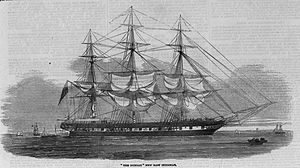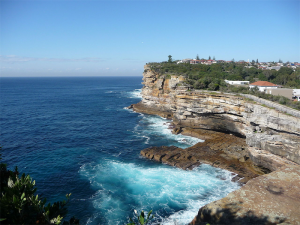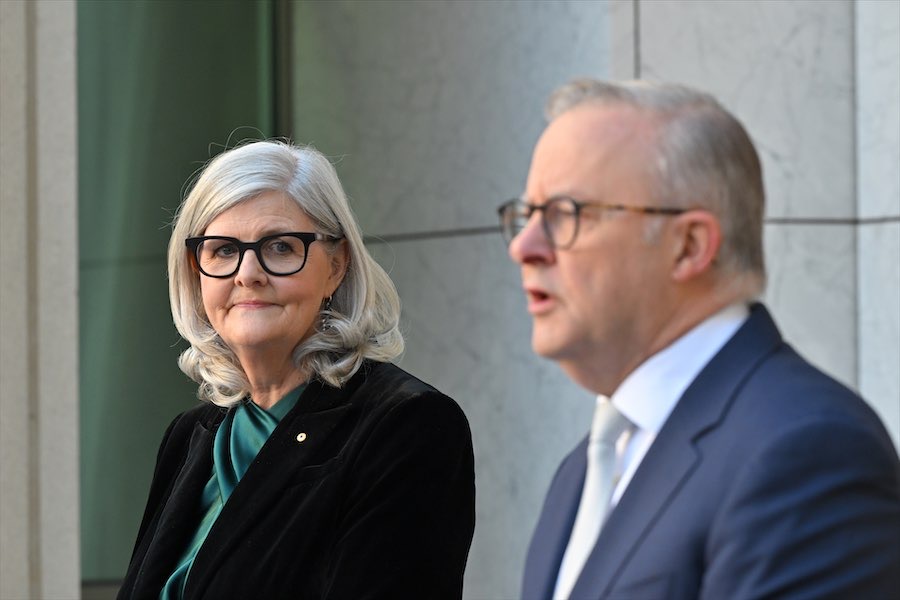A MARITIME disaster of epic proportions, a book of poems washed up on shore and a sea-faring ghost story…

No, not a remake of the “Titanic” movie, but the story of the sinking of the “Dunbar”, wrecked off Sydney Heads in 1857 and still the single most dramatic civilian tragedy in Queanbeyan’s past.
August 20, 159 years ago, a dark and stormy night, was one of the worst on record for Sydney at the time.
In the all-encompassing gloom, as the luxury passenger ship entered the harbour, a nautical miscalculation combined with a fearsome gale drove it against the cliffs near sheer rock-face of The Gap.
The “Dunbar”, one of the largest – and finest – vessels of its era, was approaching the end of an otherwise uneventful 81-day journey from England, the manifest detailing 63 passengers and 59 crew, though figures vary, up to a total of 136.
Every man, woman and child on board perished that night, save one; able seaman James Johnson somehow clung to the rocks when flung upon them by the fierce seas.
In the light of the next morning, shocked Sydneysiders were greeted with detritus from the wreck – and corpses too, some mutilated by sharks: “the trunk of a female… the legs of a male… [a] bleached arm and extended hand”, even a woman tightly clutching a baby, all detailed in the accounts that proliferated shortly after the tragedy, so intense was the level of public interest.
One of the beached items was a book of poetry published in England by the Methodist missionary John Gale, who had arrived here three years earlier and who would earn repute as founder of “The Queanbeyan Age” and the “Father of Canberra” for lobbying to see the capital sited in these parts. It’s believed this tome made its way back to Gale’s personal library.
Far less poetic though was that, while the loss of life for the still-fledgling colony was generally staggering (the Maritime Heritage Research Centre of NSW likens it to “six fully laden jumbo jets crashing into Botany Bay”), for the Queanbeyan district it was proportionally even more personal.

Two passengers were prominent locals: Thomas Hyacinth Macquoid, owner of Tuggeranong Homestead and son of the third Sheriff of NSW, and grazier William Severn.
For a town with a population of only around 500, as Queanbeyan had at that point, this would have been distressing enough, but the knock of death was even louder.
Abraham Meyers was a Queanbeyan businessman who was returning home on board the “Dunbar” after a visit to the mother country. With Abraham was his wife, Julia, their six children and two servants – their deaths marking one of the largest singular losses of the disaster.
Abraham’s was one of the few bodies ever recovered and he, along with other “remains” as the official inscription declares, was interred in the Dunbar Tomb at the Camperdown Cemetery.
And the ghost story? Well, it’s not the one based around the quaint cottage in Queanbeyan named for the “Dunbar” (located in Macquoid Street, no less) but rather concerns another passenger whose body was recovered and buried in a separate grave.

As the yarn goes, a ghostly grey figure is alleged to visit the final resting place of Capt John Steane, of the Royal Navy. The suggestion – and as with all the best legends, the historical evidence is hazy – is that it’s Mrs Hannah Watson, wife of the former harbour master of Port Jackson in which the ill-fated “Dunbar” was attempting to find respite from the storm that night.
Mrs Watson is buried across the way from Capt Steane and died only a matter of days before him. It’s purported she was linked to him in life, and now according to some, in death.
Nichole Overall is a Queanbeyan-based journalist, author and local historian.
Who can be trusted?
In a world of spin and confusion, there’s never been a more important time to support independent journalism in Canberra.
If you trust our work online and want to enforce the power of independent voices, I invite you to make a small contribution.
Every dollar of support is invested back into our journalism to help keep citynews.com.au strong and free.
Thank you,
Ian Meikle, editor




Leave a Reply